Tim Gosling started his career in theater design, honing an eye for presentation and transporting environments that is now evident in his custom furniture, interior projects such as London’s five-star hotel The Goring, and luxury boutiques like Jaeger-LeCoultre’s flagship on Bond Street. This spring he debuted his second collection with The Rug Company, which directly references Art Deco motifs and showcases a newly invented bronze silk thread. Whitewall spoke with Gosling about his interest in mixing historic and contemporary interior and architecture styles, as well as why he’s never without a sketchbook.
WHITEWALL: This was your second time collaborating with The Rug Company. How did you arrive at the Art Deco period as a source of inspiration for this collection?
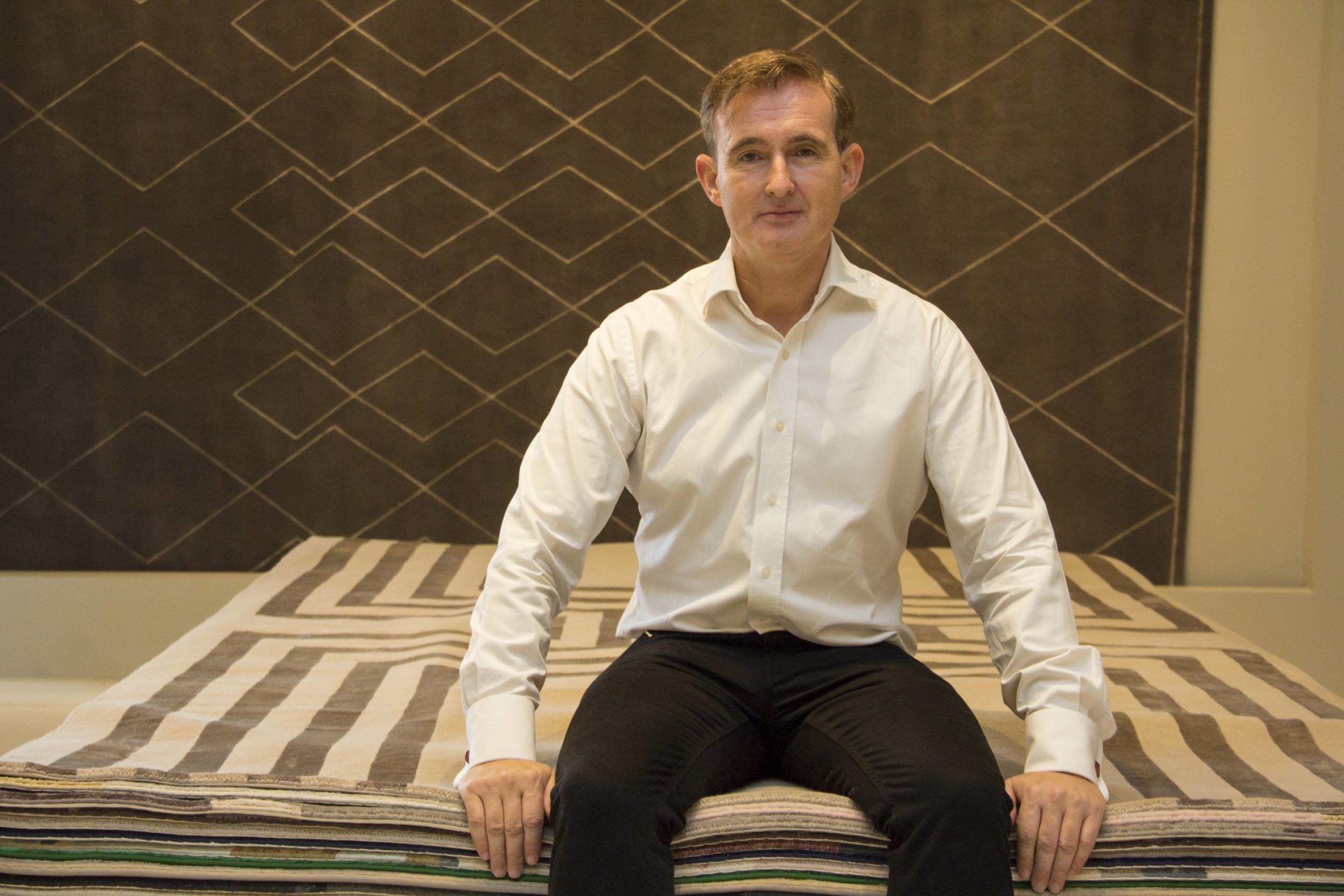
Courtesy of The Rug Company
TIM GOSLING: The Art Deco period has always been a personal favorite of mine—it’s very closely linked to the 1830s Regency in the explosive nature of ideas, craftsmanship, and materials. It displays an incredible sense of optimism in looking toward a future in design ideas.
I have a 1930s Rolls-Royce, which is pure Art Deco in design. I collect 78 records to listen to music of the period, and I’m playing some great jazz piano pieces written in that same period.
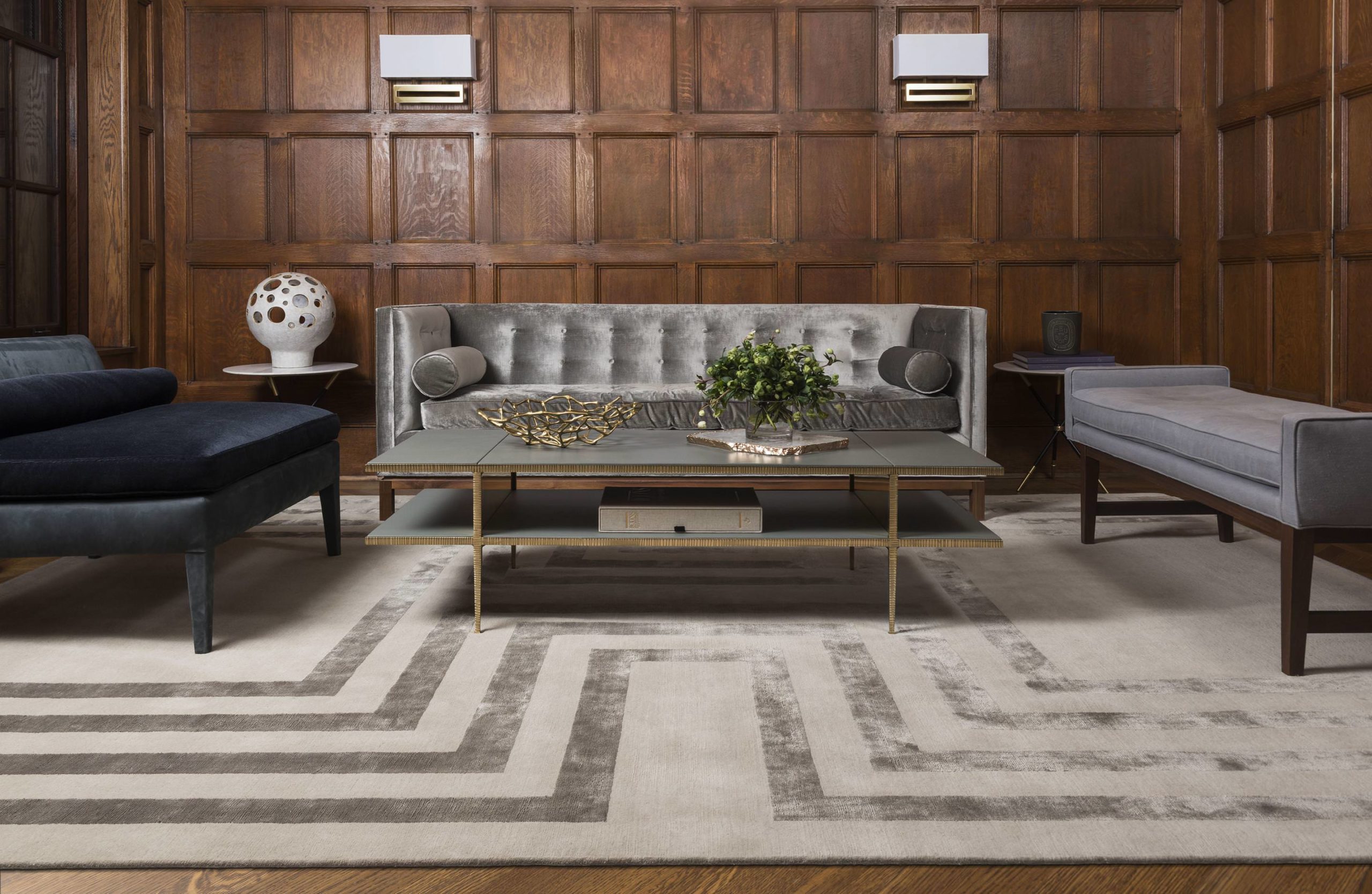
Tim Gosling for The Rug Company
WW: The Empire rug you designed references the monument of Marcello Piacentini in Italy—connecting the architecture of the 1930s with the Roman past. Can you tell us more about that intriguing connection?
TG: I wanted to find an expression of European Art Deco as my first collection for The Rug Company. The collection was based on Art Deco architecture from London and Rome. Rome was the obvious city to look at and, in particular, the new wave of Italian political Deco architecture that was making a statement in Rome—it had an association to its true historical imperial Roman past, which fascinated me.
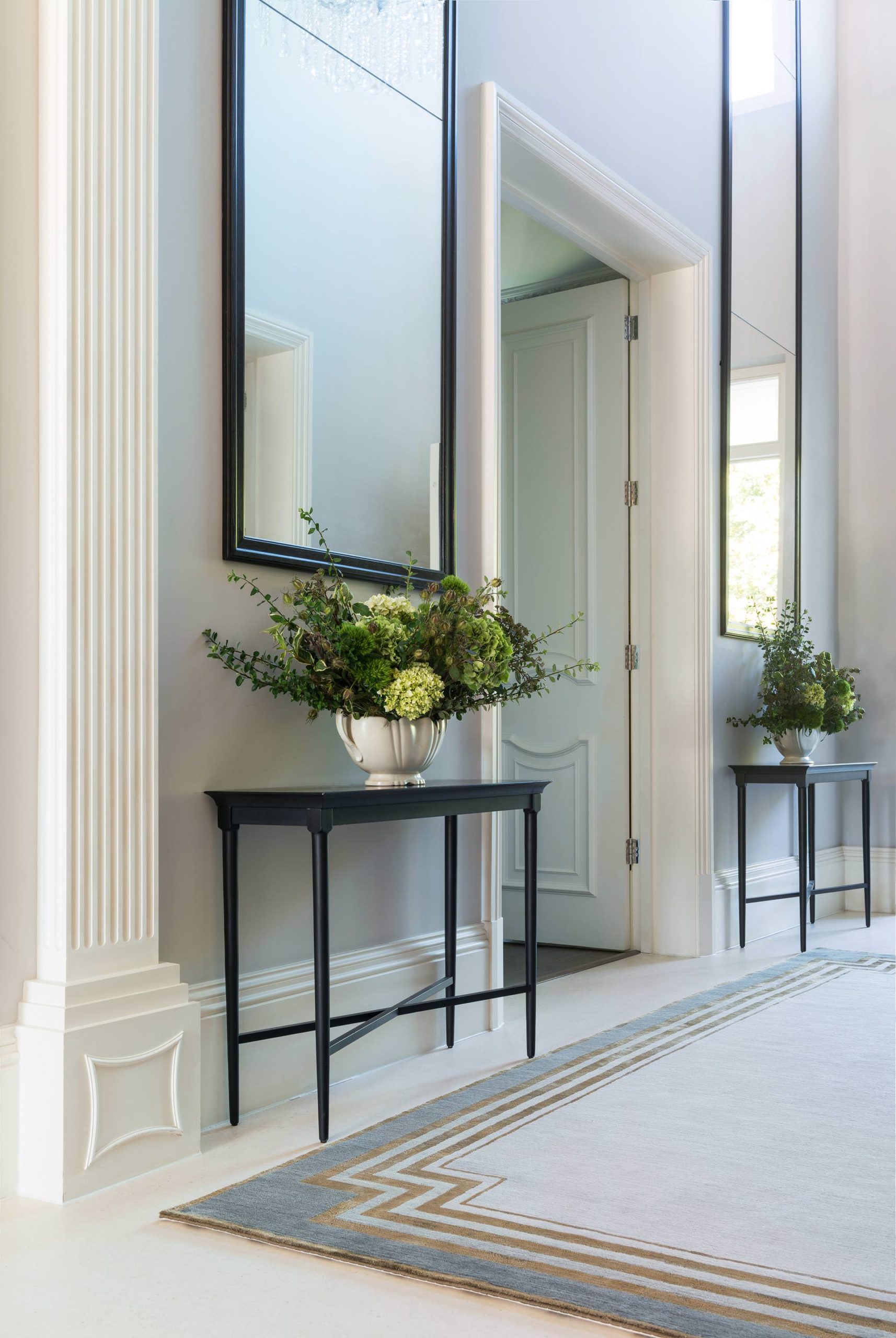
Tim Gosling for The Rug Company
The simplification of a Roman colonnade into an Art Deco format was magical.
WW: Can you tell us about the classic geometric design behind the Deco Border rug?
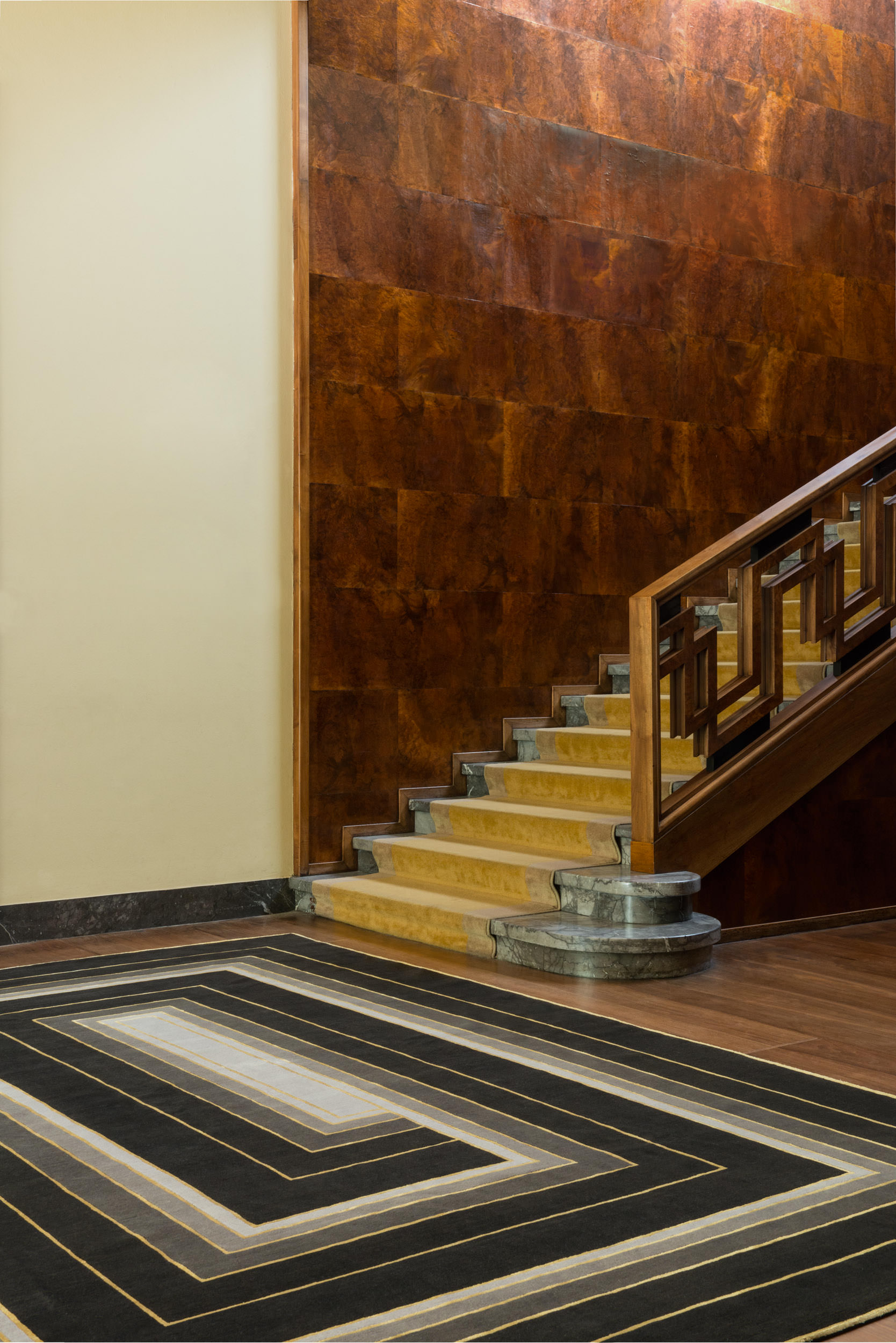
Tim Gosling for The Rug Company
TG: Everything in the language of Deco is based on three as its main thought process: three panels, three silk lines, three windows set into architecture. The closer you get to the forties, the more it moves into some elements of using the math of four.
WW: What about the Deco Diamond and Deco Spiral—were there specific points of reference for either?
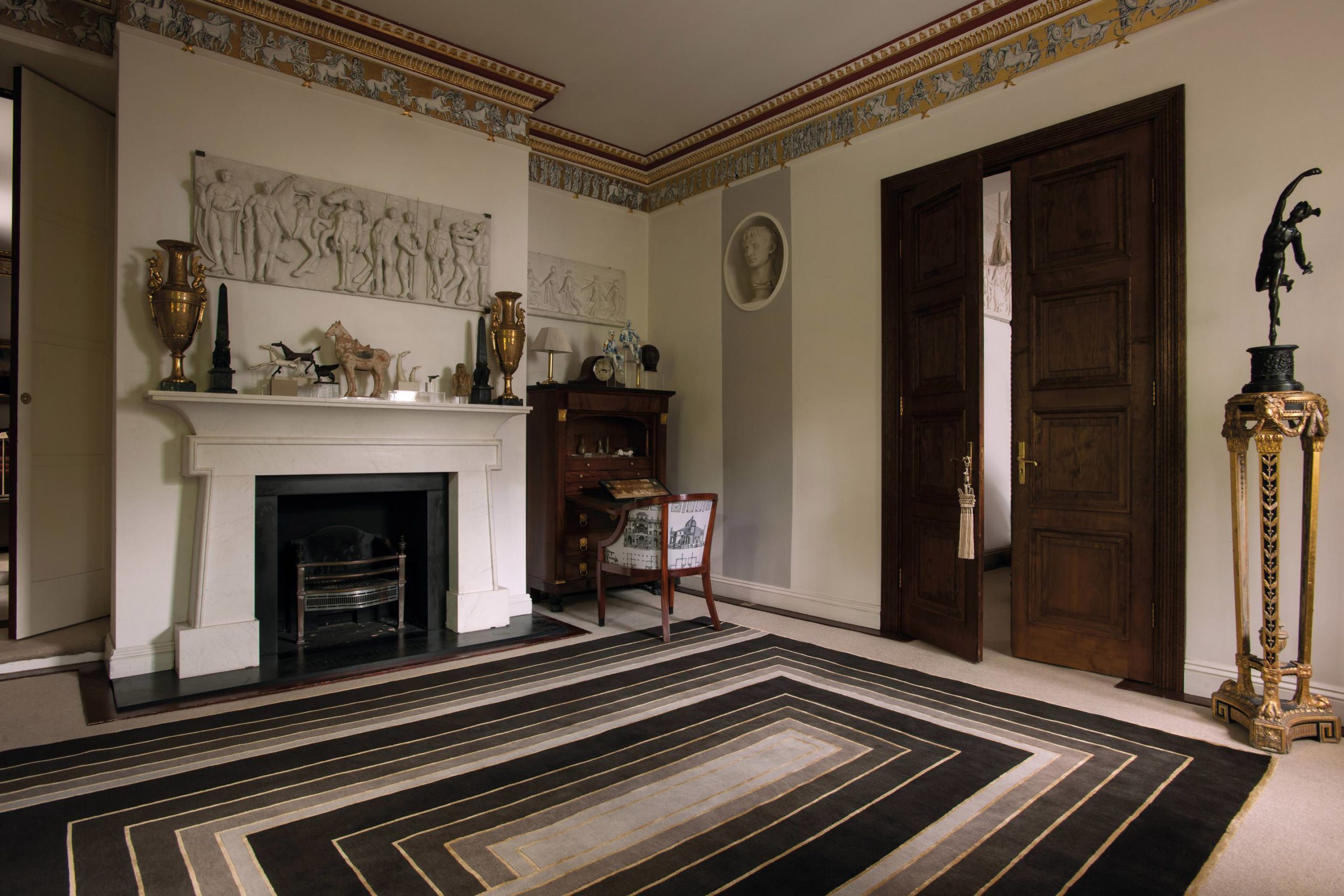
Tim Gosling for The Rug Company
TG: Yes, these designs were based on London buildings, The Dorchester Hotel being one, with the extraordinary bronze side panels on the side of the building created in the 1930s.
WW: For this collection, you were able to create with The Rug Company a metallic silk—something completely new. Why did you want to explore the possibility of metallic colors in this collection?
TG: Along with many other designers and architects, I have been using bronze more and more. I started to realize that there were very few carpet designs that had a color that would reflect this wonderful material. To create a bronze color in silk was a very difficult process, but we managed to do this. It is the same with the gilded lines, which, color-wise, is less complex to create, but it was technically tricky to make them tight and sharp. We ended up cutting one millimeter on each side of the silk to stop it looking visually fuzzy.
WW: What trend in design would you hope to see fall out of fashion, or not revisited?
TG: I hope to see the idea of “disposable design” becoming something of a past expression. It is better to create pieces and designs to last for decades, if not centuries.
WW: Do you see design as cyclical?
TG: I think you are always learning from the past—design elements keep coming around, but are always expressed in a different order.
WW: You sketch architecture and design daily, you’ve said. What purpose does this exercise serve in your design practice?
TG: I am never without a sketchbook and pencil. As a designer, it is wonderful to have the ability to immediately interpret a client’s vision and visually create a piece to scale and in its position within a room. It is a gift for both myself and the client.
WW: Outside of design and architecture, you’ve said the theater, ballet, or opera can help the creative process for you. It seems like there are definitely some connections we can draw from the experience of a performance and that of immersive design . . .
TG: I am passionate about the arts and I go the theater, ballet, or opera in London several times a week. My career was launched in the world of theater design, and this theatrical training has gone on to become an intricate part of my design approach. I always imagine the curtain rising and the anticipation of the visual experience about to unfold. It is wonderful to bring some theater and anticipation into our lives. It is incredible so see how a glorious piece of furniture can become center stage.
This article is published in Whitewall‘s 2017 Design Issue.









